Film Photos Capture the ‘Golden Era’ of BMX
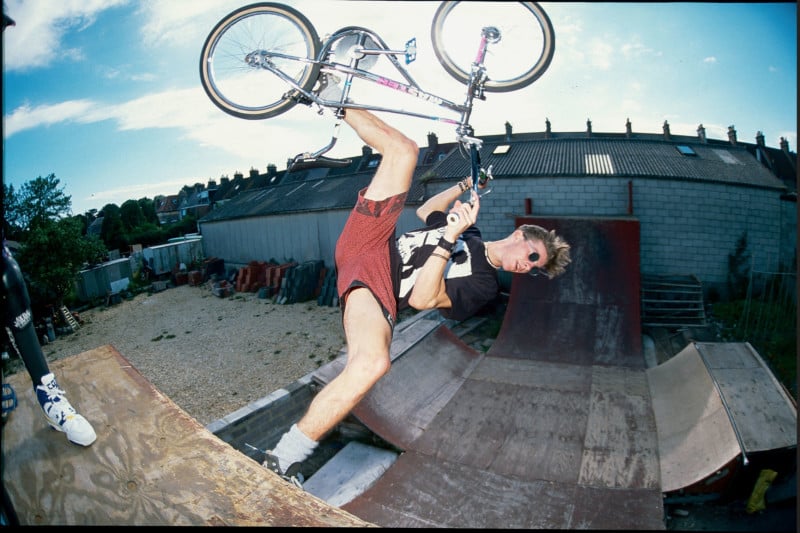
It was 1987 and the end of the BMX craze, the sport is being pushed underground. Photographer Mark Noble decided to start publishing magazines, using his film cameras to take pictures of riders on DIY ramps as the extreme sport built itself back up again.
Noble started out on a Pentax ME Super before progressing to a Canon T90 to capture BMX riders risking it all on sketchy, makeshift ramps and jumps for little reason other than kudos among their peers.
“It was a time when BMX went so underground after the boom and craze years of the early to mid-80s when it was all Raleigh Burners and BMX was on TV – and then it just disappeared, BMX just went bust,” Noble tells PetaPixel.
“The riders who stuck with BMX then rebuilt it from the ground up — we started the bike companies, the BMX events, started BMX shops, ran the magazines, designed our own products, built our own bikes, filmed our own videos, and created everything. This change and this energy were also really photogenic.”
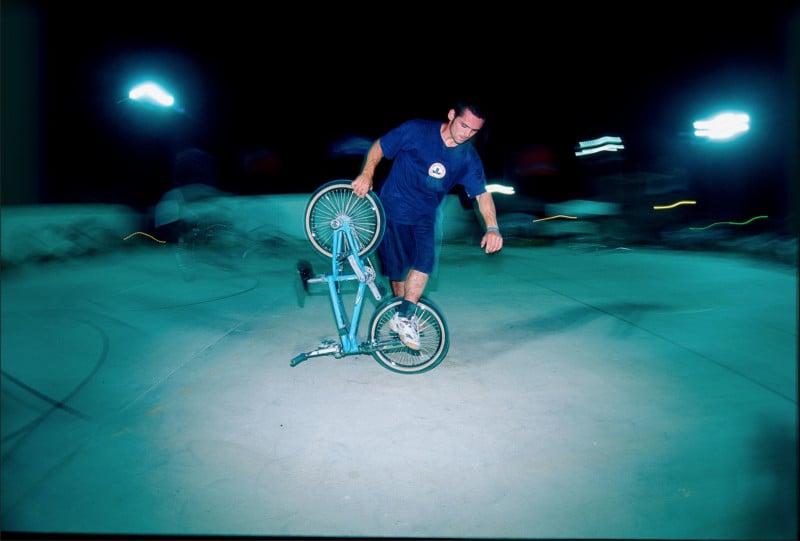
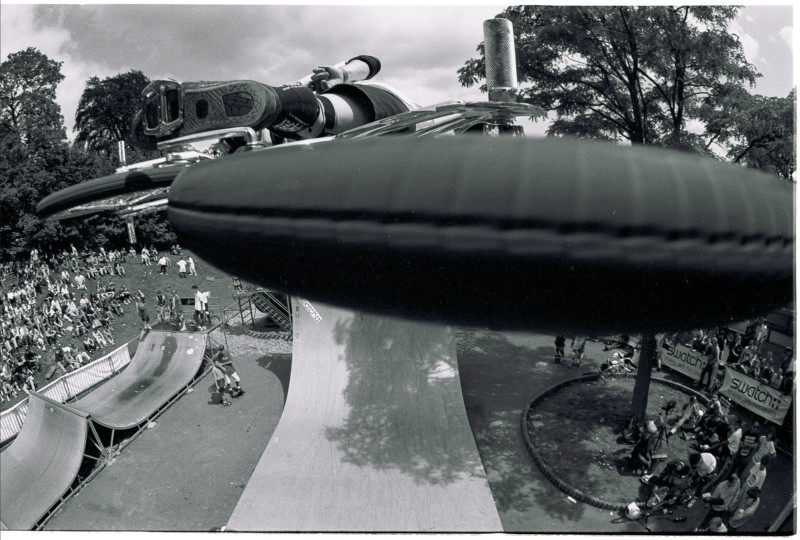
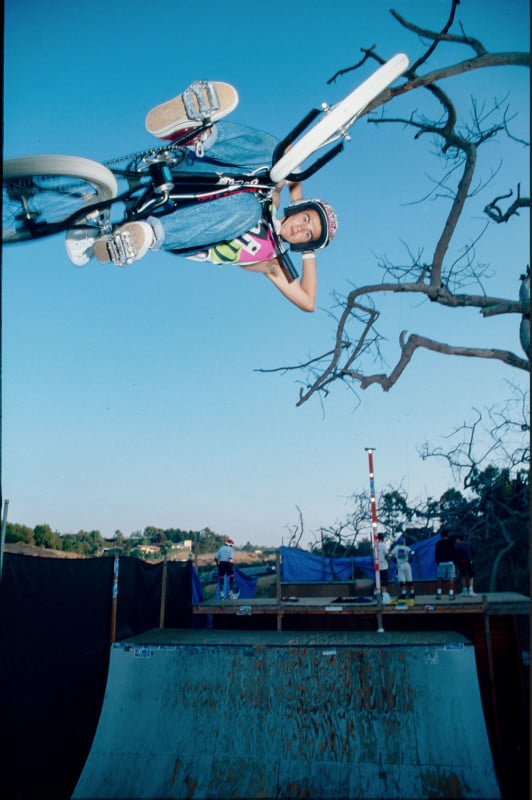
It is astonishing that these ragtag bunch of daredevils helped a nascent pastime become an Olympic sport.
“BMX was re-formed in this era. Anyone who lived and rode through this time knows how influential it was — now BMX is in the Olympics, is understood by the general public for what it is, BMX tracks or skateparks are in every town, and everyone gets it,” explains Noble.
“BMX today wouldn’t be where it is now without the people, places, and events that shaped it during this golden era — and this is what my Photobook covers.”
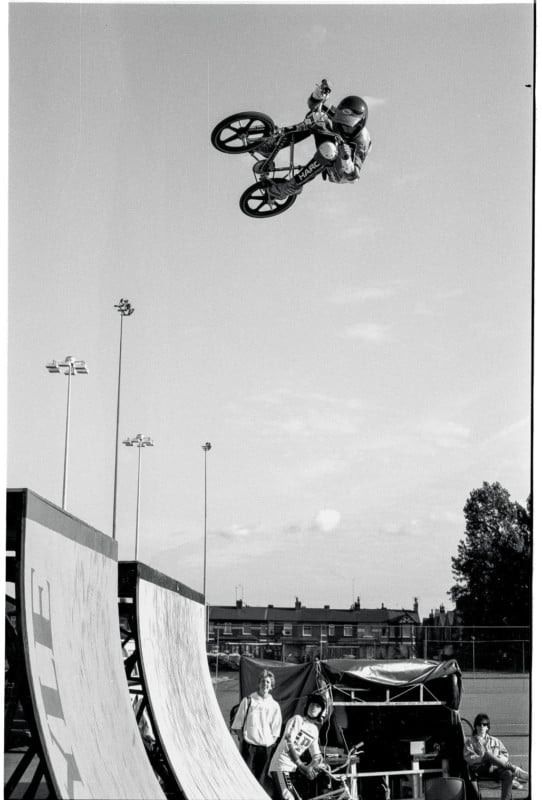
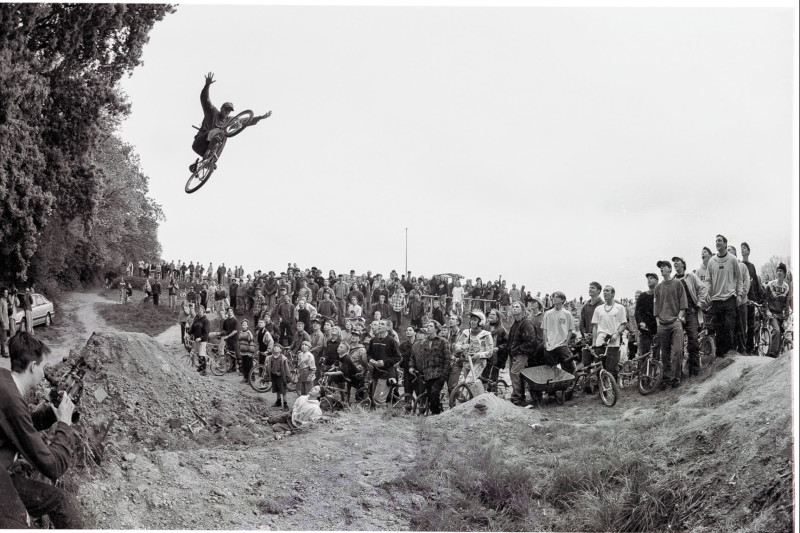
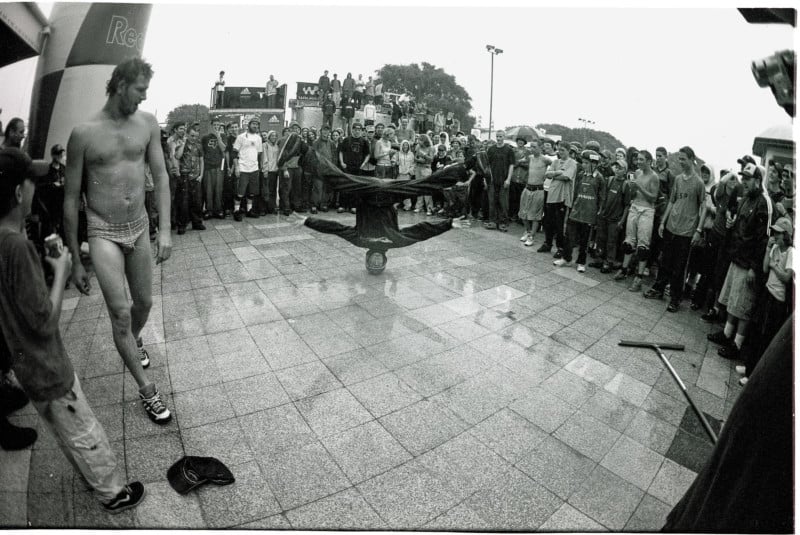
Noble went through an estimated ten thousand BMX photos, all of them shot on film, to collate in his new book called Emulsion.
“All the photos in the book are full-frame, no crop, and also we kept in any scratches or blemishes on the film. Chris [his brother] didn’t have to do any painstaking Photoshop to ‘restore’ any of these images to perfection — we wanted to keep the patina on the photographs, and it’s worked really well. And, saved us a ton of work.
“They were all negs and slides and I scanned anything that jumped out for the photo book, so I think I ended up with over 800 scans in the end. I bought a new OpticFilm desktop scanner for a few hundred quid and the quality is superb — especially compared to the gigantic film scanner we had back in the magazine days.”
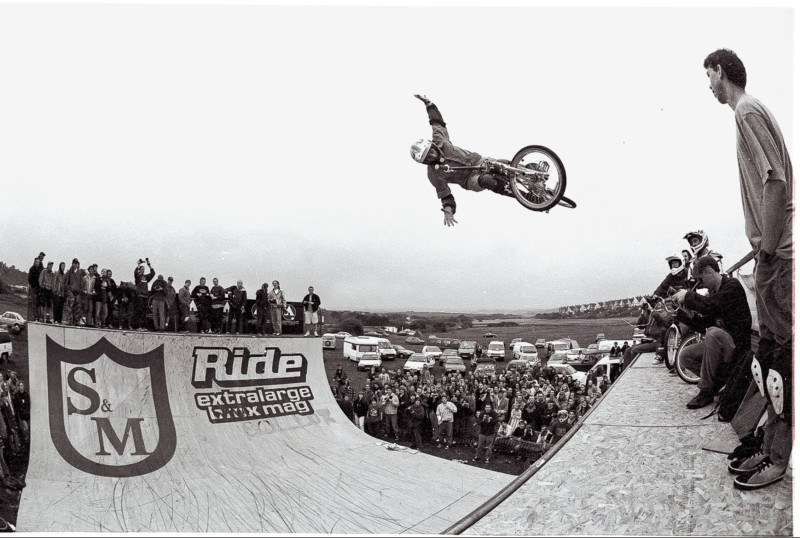
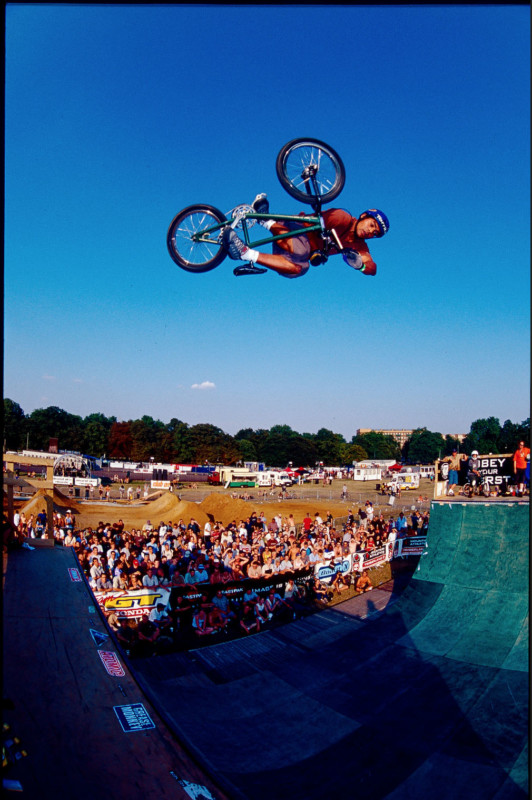
How To Capture a Great Action Shot
Noble says that modern cameras “cheat” the process with the burst function that is found on all modern cameras. But says when shooting on film, or maybe with a flash gun, timing is everything.
“Good composition is absolutely key — you have to consider or pre-empt where the person is going to be at the peak of action, in relation to the foreground, the background, the crowd, the take-off point, the landing area, the scene in general. I guess, being a rider myself, means I fully get where the action is going to go — composition simply can’t be cheated.”
Emulsion can be purchased by visiting its website.
Image credits: All photos by Mark Noble.